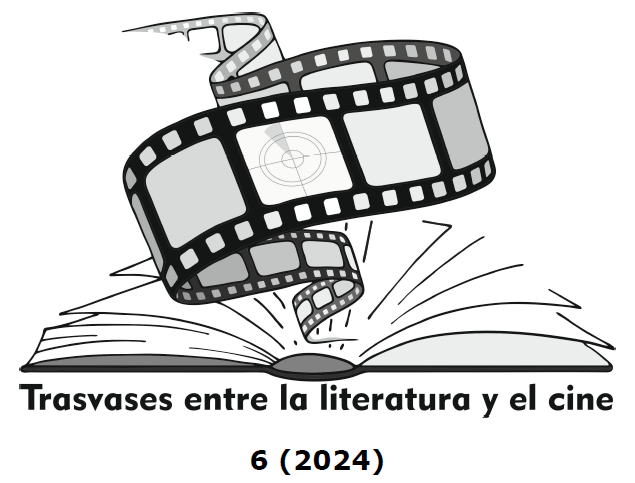The Evolution of a Myth in the Adaptations of Sheridan Le Fanu's "Carmilla" (1872):
"The Splattered Bride" (Vicente Aranda. 1972) and "The Carmilla Movie" (Spencer Maybee, 2017)
DOI:
https://doi.org/10.24310/tlc.6.2024.18228Keywords:
Literature, LGBTIQ+, Film Adaptation, Eroticism, Vampire, Discourse AnalysisAbstract
The novel Carmilla, written by Sheridan Le Fanu in the second half of the 19th century, has been the subject of film adaptations as Vicente Aranda's 1972 feature film La novia ensangrentada and the Canadian film The Carmilla Movie (Spencer Maybee, 2017). The story is about the relationship between two young women: a mortal and a vampire. Both adaptations place this Victorian myth in the present and claim aspects of gender and female homosexuality in the context of its actuality.
Downloads
Metrics
Publication Facts
Reviewer profiles N/A
Author statements
Indexed in
-
—
- Academic society
- N/A
- Publisher
- Universidad de Málaga
References
ALFEO, Juan Carlos (2002), «Evolución de la temática en torno a la homosexualidad en los largometrajes españoles», Dossiers feministes, págs. 143-159.
ALMERÍA, Luis Beltrán (2011), «Novela y diario. El diario como forma de escritura y pensamiento en el mundo contemporáneo», en L. Paz Rodríguez Suárez y D. Pérez Chico (coord.), El diario como forma de escritura y pensamiento en el mundo contemporáneo, Zaragoza, Institución Fernando El Católico.
ARANDA, Vicente (1972), La novia ensangrentada, Morgana Films.
CASTILLEJO, José (2006), Vicente Aranda: El cine como compromiso, Valencia, Saimel.
CHATMAN, Seymour (1990), Historia y discurso, Madrid, Taurus.
CODESIDO-LINARES, Váleri (2022), El discurso cinematográfico español en la década de los 70: análisis narrativo del tardofranquismo a la Transición, Universidad Complutense de Madrid [Tesis Doctoral].
COLMENA, Enrique (1996), Vicente Aranda, Madrid, Cátedra.
FOUCAULT, Michel (1978), Histoire de la sexualité, Volume I: An Introduction, Nueva York, Pantheon Books.
GARCÍA ÁNGEL, Antonio (2014), «La vampiresa que llegó antes», en Sheridan Le Fanu, Joseph, prólogo de Carmilla, Bogotá, Instituto Distrital de las Artes, págs. 7-8.
GARCÍA GUARDIA, María Luisa y NÚÑEZ GÓMEZ, Patricia (2011), «La relación del espacio narrativo en el cómic, el lenguaje audiovisual en el relato hipermedia», en F. García García y M. Rajas (eds.), Narrativa audiovisual: mediación y convergencia, 14, págs. 217-229.
GRENFELL, Laura (2003), «“Carmilla”: The “Red Flag” of Late Nineteenth-Century Vampire Narratives?», Tessera, págs. 152-167.
HABIBOVA, Manzilia Nuriddinovna (2023), «Letter Fiction and Diary Fiction», American Journal of Public Diplomacy and International Studies (2993-2157), 1/9, págs. 153-158.
HEREDERO, Carlos (2000), «La lava y el iceberg. Lenguaje y estilo en el cine de Vicente Aranda», en J. Cánovas (coord.), Miradas sobre el cine de Vicente Aranda, Murcia, Universidad de Murcia, págs. 113-132.
MAJARÍN, Sara (2013), Una vida de cine. Pasión, utopía, historia. Lecciones de Vicente Aranda, Alcalá La Real, Zumaque.
MARÍLIA MILHOMEM MOSCOSO, Maia (2020), «Vampirism and Lesbianism in Carmilla by Joseph Sheridan Le Fanu», European Journal of Literature, Language and Linguistics Studies, 3/4.
MAYBEE, Spencer (2017), The Carmilla Movie, Shaftesbury Films.
MCNICHOLAS SMITH, Kate (2020), Lesbians on Television. New Queer Visibility & The Lesbian Normal, Bristol, Intellect.
MELERO, Alejandro (2014), «La representación de la homosexualidad en el cine de la dictadura franquista», Zer, 19/36, págs. 189-204.
PÉREZ-BOWIE, José Antonio (2004), «Teatro y cine: un permanente diálogo intermedial», Arbor, 177, págs. 573-594.
PIENIAZEK-NIEMCZUK, Elzbieta (2013), «Evolution of the Vampire Across Borders and Times», M. Bilá, & S. Zákutná, Language, literature and culture in a changing transatlantic world, 2, págs. 85-93.
PUJANTE, Pedro (2019), «Los mitos literarios y su trasvase al cine. Hacia un nuevo paradigma posterrorífico: la socialización del monstruo», Trasvases entre la literatura y el cine, 1, págs. 167-180.
RICHTER, Nicole (2013), «Bisexual Erasure in “Lesbian Vampire”», Film Theory, Journal of Bisexuality, 13/2, pág. 273-280.
RODRÍGUEZ, Joaquín (2000), «Cine de sangre, cine vivo», en J. Cánovas (coord.), Miradas sobre el cine de Vicente Aranda, Murcia, Universidad de Murcia, págs. 133-146.
SÁNCHEZ NORIEGA, José Luis (2000), De la literatura al cine: teoría y análisis de la adaptación, Barcelona, Paidós Ibérica.
SHERIDAN LE FANU, Joseph (2014), Carmilla, Bogotá, Instituto Distrital de las Artes.
THAYER, Malcom (2023), «Camp is Undead(?): Queer Vampire Becoming in the Age of Nonconformity», Periclean Honors Forum Scholar Award Winners, 8.
UYGUR, Mahinur Aksehir (2013), «Queer Vampires and the Ideology of Gothic», Yaşar Üniversitesi E-Dergisi, 8 (Special issue).
VUCKOVIC, Dijana y Ljiljana PAJOVIC DUJOVIC (2016), «The Evolution of the Vampire from Stoker's Dracula to Meyer's Twilight Saga», CLCWeb: Comparative Literature and Culture, 18/3, págs. 1-8.
WISKER, Gina (2016), «Female Vampirism», en A. Horner y S. Zlosnik (coord.), Women and the Gothic: An Edinburgh Companion, Edinburgo, University Press, págs. 150-165.
Downloads
Published
How to Cite
License
Copyright (c) 2024 Váleri Codesido Linares

This work is licensed under a Creative Commons Attribution-NonCommercial-ShareAlike 4.0 International License.
All authors published in this journal accept the following copyright terms:
a. Authors retain their authors´ rights (copyright) and grant First Publication Rights to the journal, which whill be published under a the Creative Commons Attribution-NonCommercial-ShareAlike 4.0 International (CC BY-NC-SA 4.0) license. All about this license is available in the following link: <http://creativecommons.org/licenses/by-nc-sa/4.0>
b. Authors may separately establish additional agreements for the non-exclusive distribution of the version of the work published in the journal (e.g. including it in an institutional repository, or publishing it in a book) with an acknowledgement of its initial publication in this journal.
c. Authors are allowed and encouraged to disseminate their work electronically (e.g. in institutional repositories or on their own website) as this can lead to productive exchanges, as well as earlier and more extensive citation of published work.
The author is responsible for obtaining permission from the copyright holder when using copyrighted materials.
This electronic journal is published by University of Málaga (UmaEditorial), thus it is necessary to cite the origin of any partial or total reproduction.








22.png)










